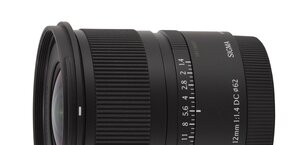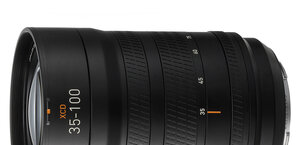Canon EF 24-70 mm f/4L IS USM
5. Chromatic and spherical aberration
The crops below, taken at 70 mm focal lengths by f/4.0 and f/5.6 apertures, show clearly that the tested lens doesn’t have practically any problems with correcting the longitudinal chromatic aberration.
 |
Please Support UsIf you enjoy our reviews and articles, and you want us to continue our work please, support our website by donating through PayPal. The funds are going to be used for paying our editorial team, renting servers, and equipping our testing studio; only that way we will be able to continue providing you interesting content for free. |
- - - - - - - - - - - - - - - - - - - - - - - - - - - - - - - - - - - - - - - - - - - - - - - -
Also the lateral version shouldn’t cause any problems here. The graphs shown below present the performance on the edge of the APS-C sensor and on the edge of full frame.


The middle of the focal range fares the best – you can’t notice any aberrations there. The worst situation can be observed at the wide angle where the aberration doesn’t depend on the aperture, keeping a level of about 0.08%. Still it is not a big problem as it is a value on a borderline between low and medium levels.
If you remind yourself that the 24-105L had maximum results of 0.14% and the 24-70 mm f/2.8L II fared even worse, with the result of 0.17%, once again it is easy to answer why you might get interested in the 24-70 mm f/4L model instead.
| Canon 5D III, 45 mm, f/4.0 | Canon 5D III, 24 mm, f/11 |

|

|
Spherical aberration
It seems that the Canon EF 24–70 mm f/4L IS USM experiences some spherical aberration problems. The first photos in this chapter show that when you pass from f/4.0 to f/5.6 the depth of field moves towards longer distances. It is not a huge effect but still noticeable.
Also the appearance of the light circles leaves a bit to be desired. The circle in front of the focus has a light centre surrounded by a much darker area which turns into a light rim. The image behind the focus is exactly the opposite of that. Instead of a rim you get a soft edge which turns into a light circle with a dark centre. If the spherical aberration was corrected properly you wouldn’t have noticed any of the effects, described above.
| Canon 5D MkIII, 45 mm, f/4.0, in front of | Canon 5D MkIII, 45 mm, f/4.0, behind |

|

|






